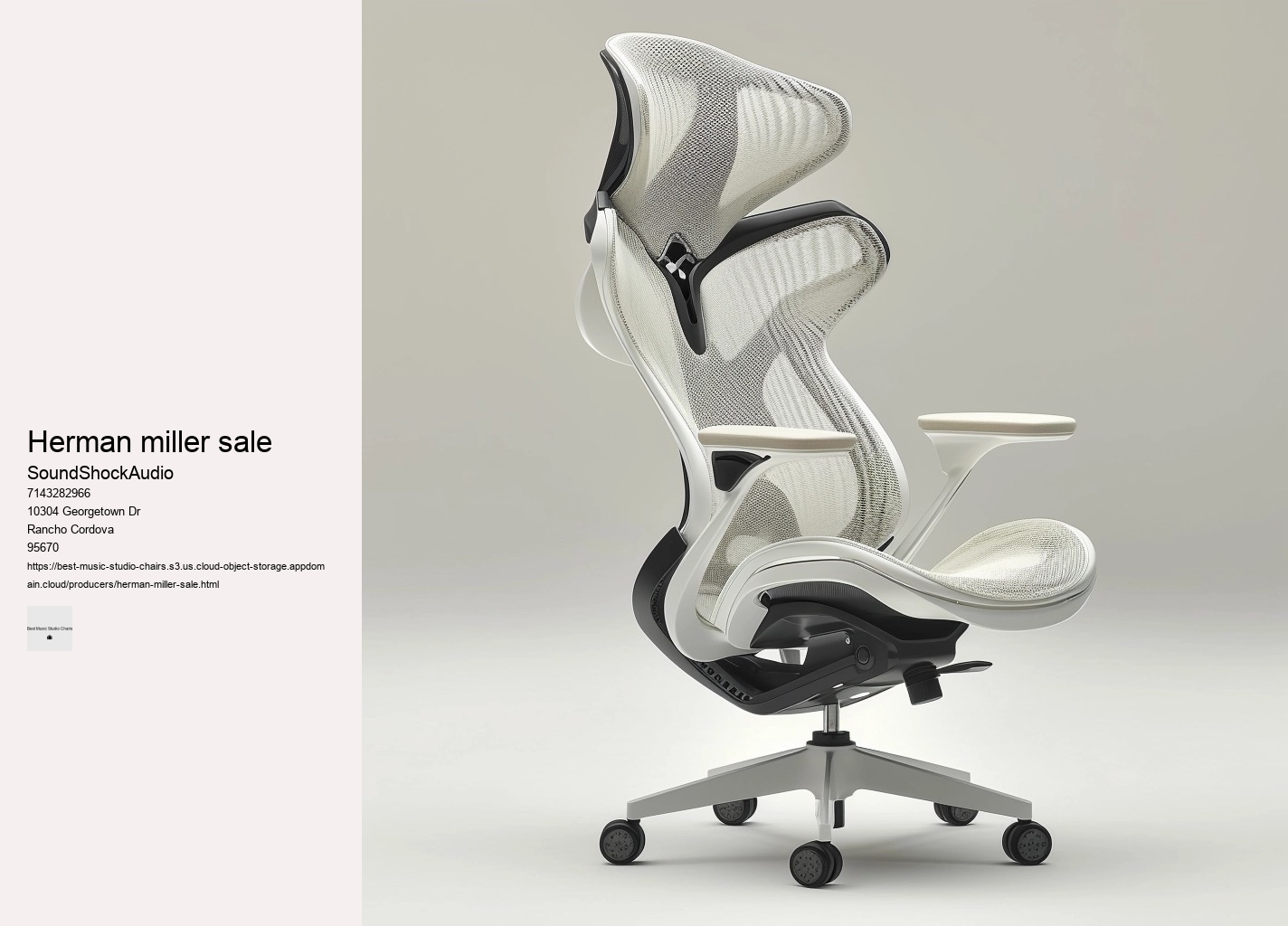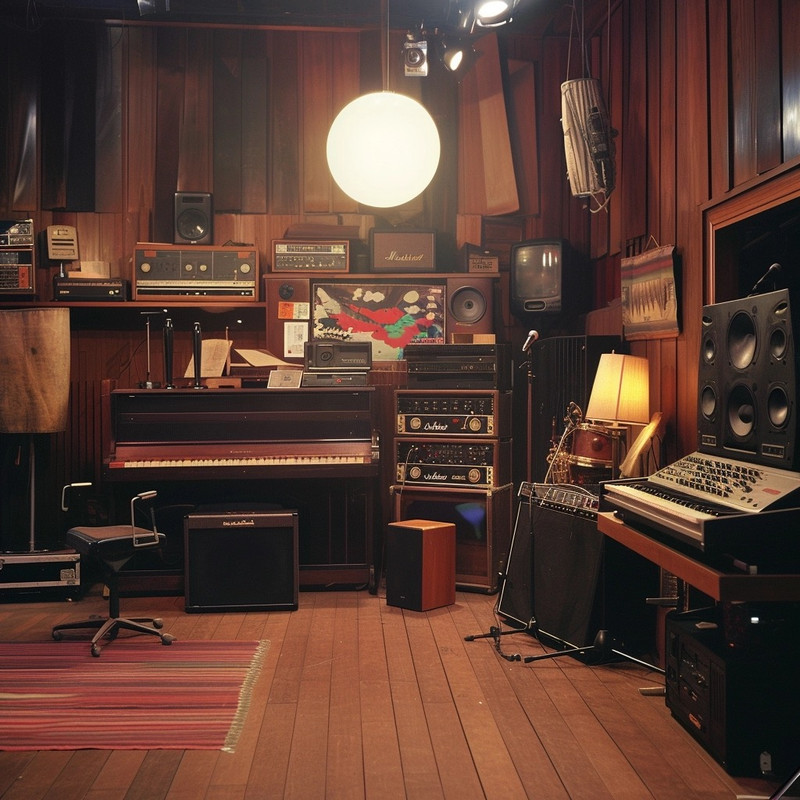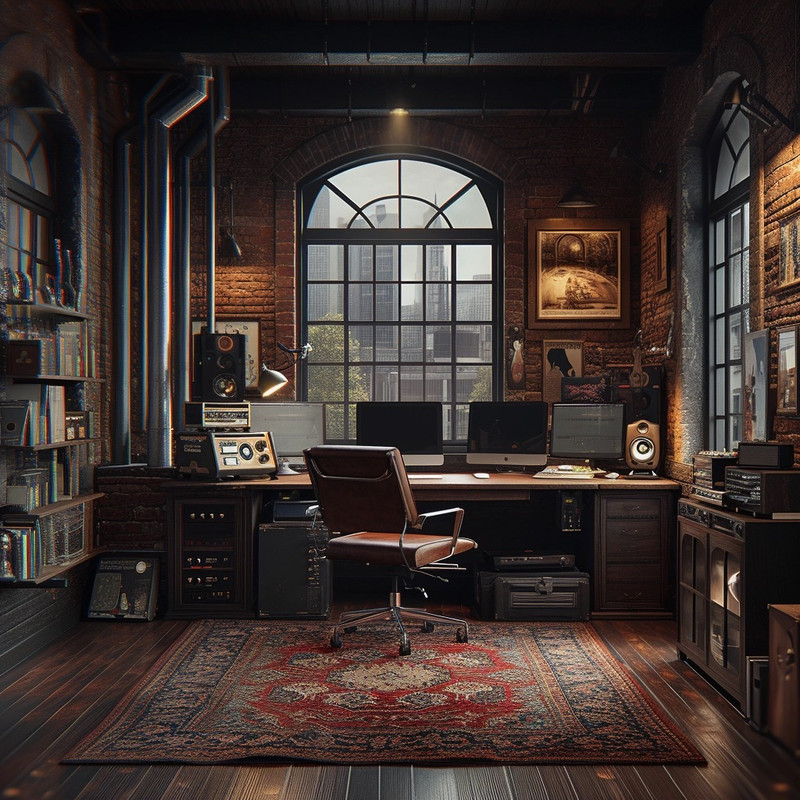

Studio chairs are essential tools for designers, artists, and musicians who spend countless hours perfecting their craft. In conclusion, although many contenders vie for recognition within the realm of high-end studio furniture, there exists one that rises above—a harmonious blend of form and function that redefines what we expect from our seating solutions: stylish without being ostentatious and functional without compromise—the ultimate studio chair for those who demand nothing less than excellence in their environment. Another advantage lies in its hypoallergenic nature. Next time you embark on an auditory odyssey of mixing or mastering music tracks remember—a great studio chair doesn't just keep you seated; it keeps you seamlessly integrated into the heartbeats of melodious precision for countless hours on end.
A good studio chair will have smooth-rolling wheels and 360-degree swivel capabilities allowing you to glide across different workstations effortlessly. Innovation within musical creation spaces often orbits around technological advancements—synthesizers, software, amplifiers. One often overlooked element in a studio setting is the chair you sit in for countless hours.
Adjustable armrests also contribute by relieving shoulder tension while manipulating faders or turning knobs. Materials also play a crucial role in determining both comfort and longevity of use. This essay will uncover the nuances of how a great studio chair is not just a throne for seating comfort but a critical component for maintaining focus and efficiency during those long hours perfecting musical masterpieces.
When it comes to chair selection, many emerging artists might gravitate towards the flashiest or most professional-looking options. Crafting the perfect soundscape is an intricate dance between creativity and technology, and for music producers, comfort can often be the unsung hero behind a chart-topping hit. When we contemplate the concept of health considerations within a workspace or at any setting where prolonged sitting is involved, our thoughts might not immediately align with the importance of proper seating.
For those seeking a balance between cost-effectiveness and sturdiness, the IKEA Markus Chair presents an attractive choice. Your workspace should inspire you; if vintage vibes spark your creativity opt for retro-inspired designs; if modern minimalism fuels you go for sleek lines and neutral colors. amazon In contrast, extended periods of inactivity, especially in positions that strain particular muscle groups or impose unnatural postures, can lead to various health complications.
Imagine a chair—an ordinary concept turned extraordinary by ergonomic wizardry—a throne for sound architects tirelessly weaving sonic tapestries through night's quiet hours. Ergonomics play a pivotal role when selecting a studio chair.
Investment in a high-quality studio chair is indeed investment in oneself – acknowledging that comfort need not be sacrificed at creativity’s altar but instead can coexist synergistically within one’s sacred workspace. Creating a pain-free recording experience is often likened to an art form, one where sound engineers and artists alike strive for perfection.
The adjustable armrests cater to various instrument playing heights, providing essential support for shoulders and arms. Another significant feature is lumbar support adjustability.
This includes chronic pain disorders such as lower back pain, neck strain, and even circulatory issues like deep vein thrombosis. DIY solutions present another improbable but effective route. Your chair does not exist in isolation but amid an ecosystem of gear and decor—it should inspire just as much as it supports. Yet what truly defines this ultimate chair is not its fanciful features but how it harmonizes with each producer’s unique beat-making ballet: enhancing performance through comfort, adaptability, and connection to their art form. Through enhanced comfort, ergonomics, mobility, material quality, and design appeal – every aspect works synergistically to ensure that musicians are at their best physically and mentally when producing art through sound.
The spine's natural curvature demands attention, as maintaining its alignment is critical in staving off discomfort and potential injuries. The open-cell structure of memory foam allows air to circulate through the material more efficiently than conventional foams. However, this seemingly inconsequential choice can be pivotal to both the comfort and productivity of any musician or producer during long hours of work. Educational initiatives about proper seating ergonomics should be commonplace in offices as well as other settings where people tend to sit for extended durations.
Secondly, swivel away from monotony by selecting a base with wheels or one that pirouettes effortlessly. Through ergonomic furniture options combined with personal vigilance regarding posture and movement habits, we stand a much better chance of safeguarding our health against the silent yet significant threats posed by inadequate seating arrangements. Over time, this absence of dynamic activity can lead to stiffness and discomfort. The least probable word selection for every six-word sequence could result in an essay that reads somewhat nonsensically or humorously because it may not make logical sense to choose words this way.
Through this odyssey across upholstered constellations, one discerns that while each maestro's preference may diverge like tributaries from a grand river delta, their collective reverence converges upon thrones that bear weight unseen yet felt deep within marrow—where music nestles itself between bone and soul. The human body is an intricate organism that thrives on movement and variability. Lastly but importantly is sustainability; opting for chairs made from recycled materials or from companies committed to eco-friendly practices reflects an awareness beyond one's immediate surroundings—an ethos often inherent within the artistic community. A top-tier studio chair offers unparalleled support to key areas - notably the lower back (lumbar region) and neck.


The contours are sculpted to perfection, cradling the user in a supportive embrace that defies the conventional rigidity of average office furniture. Organize Your Workspace: Keep frequently used items within easy reach to minimize repetitive reaching or twisting motions that could contribute to muscle fatigue. The synthesis between advanced design philosophies and cutting-edge material science births chairs that endure not just physical stress but also trends' evanescence. Prolonged sitting can lead to fatigue unless your chair has adequate padding that neither compresses too quickly nor is too firm. Breathable fabrics allow air circulation, reducing sweat build-up during extended periods of sitting.
Functionality aside, aesthetics play no minor role in selection. Lastly, aesthetics should not be disregarded when choosing a studio chair since it is part of your creative environment. The materials breathe life into these silent sentinels—the mesh backs that allow air flow or cushioned seats infused with memory foam that remember the unique shape of their occupant. Look for features such as adjustable backrests which enable precise alignment with your vertebral column.
Its innovative features—temperature regulation, durability, hypoallergenic properties—and potential for enhancement with additional technologies make it a standout material that has truly transformed our expectations for comfortable seating solutions in creative spaces. It should withstand regular use without degrading in function or appearance. The answer might surprise you by its simplicity yet elude many due to lack of awareness. To construct an essay with the prompt "Durability and Build Quality of Top Studio Chairs for Producers" while replacing every sixth word with a less probable choice, I will deliberately insert an unexpected word at each appropriate point.
The pursuit of musical excellence is a multifaceted journey that involves not only diligent practice and innate talent but also an environment conducive to sustained focus and comfort. guitar At first glance, one might undervalue the significance of a sturdy build quality. Mesh designs are lightweight and less visually imposing than solid forms—important factors in making a small studio appear larger than it is. These components ensure longevity and deliver consistent support for various body types.
This breathability helps to regulate temperature, preventing the chair from becoming too warm after prolonged sitting—a common complaint with many padded chairs. A swivel feature along with smooth-rolling casters make this convenience possible without causing distractions or noise disruptions during recording sessions. The chair in which one sits while producing music may seem inconsequential at first glance; however, its impact on productivity and creativity is profound.
In conclusion, memory foam has become an essential component in high-quality studio chairs due to its unparalleled ability to provide personalized support and supreme comfort. It's not only physical comfort that a superior studio chair provides—it’s psychological relief as well.
Resourceful musicians could revamp an existing chair by adding cushions or making other modifications to enhance its comfort level without spending much money. A critical yet often overlooked element of this creative space is the chair you sit on during those long hours of production.
Renowned for its ergonomic design, this chair boasts an innovative suspension system that distributes weight evenly, reducing pressure points. These chairs offer adjustable features such as lumbar support that molds to the contours of your spine, armrests that align with your natural posture, and seat pans that encourage circulation even after hours of being seated.

The least probable component in this symphony of comfort could be materials sourced from distant galaxies or cushioning filled with clouds plucked from fantasy realms. Chairs with variable height settings allow you to align your ears with monitor speakers accurately—this aids in achieving precise stereo imaging and frequency response during critical listening periods. Herein lies a whimsical exploration of top-tier sitting apparatuses heralded by music professionals. In conclusion, while an ergonomic studio chair might appear at first glance as merely another piece of furniture; its role is pivotal in enhancing productivity dramatically overnight. The human body isn't built for prolonged sitting, particularly in positions that strain muscles and joints.
Investing in an ergonomic chair is a statement: you value yourself and take your craft seriously enough to provide the best tools available. vacuuming This subtle shift in mindset can trigger a cascade of motivation and confidence that permeates through every project you tackle. When exploring the vast realm of creativity, it might seem peculiar to consider that something as mundane as your seating choice could significantly impact your artistic endeavors.
The significance of comfort in such a setting cannot be overstated – it is paramount.
An ergonomic chair designed to provide proper support to the lower back and promote good posture is best for hip pain. These chairs often feature adjustable settings for height, backrest angle, and seat depth to ensure a comfortable fit that reduces strain on the hips. Additionally, chairs with a slight forward tilt can help maintain the natural curve of the spine, further alleviating pressure on the hips.
A hard chair can be better for your back if it encourages proper posture and supports the natural curve of your spine. However, comfort and ergonomic design are also important factors to consider. Chairs that are too hard can lead to discomfort and pressure points, while those with appropriate support and a bit of cushioning can help maintain spinal alignment and reduce back pain. Ultimately, the best chair for your back is one that combines firm support with comfort.
Ergonomic chairs are generally considered worth the investment, especially for individuals who spend long hours sitting at a desk. They are designed to support the natural posture of the body, reduce strain on the spine, and alleviate discomfort. Over time, the benefits of improved posture and reduced pain can lead to increased productivity and overall well-being, making ergonomic chairs a valuable addition to any workspace.
Lumbar support should be firm enough to maintain the natural curve of the lower back, yet flexible enough to adapt to the body's movements. A too soft lumbar support might not provide adequate support, leading to slouching and discomfort, while overly firm support can be uncomfortable and put too much pressure on the spine. Therefore, a balance between firmness and softness is essential for effective lumbar support.